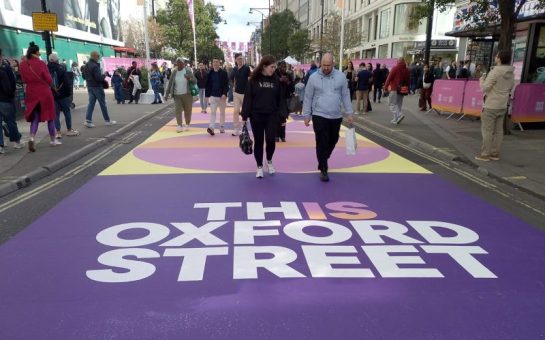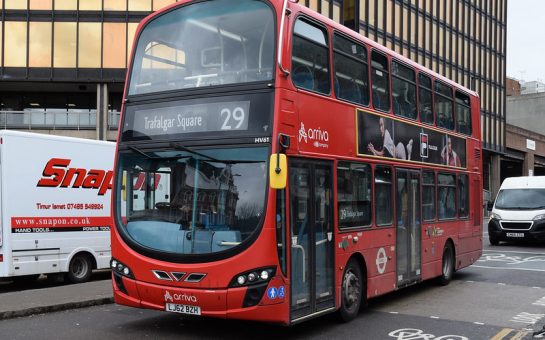There is a 30-fold difference in smoking cessation spending across London boroughs, according to new NHS England data.
The latest figures from the Clinical Outcomes and Indicators show Westminster, in the period of April to December of 2024, invested (excluding stop smoking aids) £8,196 per quitter while Brent allocated just £273.
This massive spending gap isn’t simply about money, however, but rather about access, support and the fundamental right to health interventions.
Paul Baker is global CEO of Allen Carr’s Easyway, a drug-free, clinically proven, award-winning method to freedom from addiction, which has been integrated into smoking cessation programmes across London, including in Southwark, Lambeth, Kingston, Sutton and Redbridge.
He said: “In terms of quitting successfully, with our method, it works for everybody, no matter how long you’ve been smoking or your background or your education levels or ethnicity, it doesn’t matter.
“So, it looks like the same success rate on every single one.
“So that’s the good news, there is a method out there that’s drug-free that helps everybody.
“But in terms of what we’re seeing now, you are seeing higher smoking prevalence in certain deprived areas and things like that.”
The numbers demonstrate a teenager in Brent faces significantly greater odds of breaking free from nicotine addiction compared to their counterpart in Westminster.
This is a difference which is measured in potential life span, reduced healthcare costs, and personal opportunity, as well as pounds.
Yet Westminster, as a relatively afluent borough, has a particulalry high spend, albeit for several reasons.
It has far fewer permanent residents than most outer London boroughs, and uniquely large daily influx of workers and tourists, meaning fewer total quitters or referrals despite high program costs.
According to the City of Westminster‘s figures, the borough is home to around 211,500 people, with 22% not having lived at the same address the year before, and 43% of households in the borough being private rentals.
However, the inequality displayed by the cost per smoker becomes even more stark when considering the borough’s respective total spends.
Westminster totalled £5,023,987 (excluding stop smoking aids) between April and December of 2024 alone, while Brent spent a mere £4,643.
This £5,023,987 is nine times larger than the next highest spender, Camden, despite the northern borough having almost twice the number of people initially referred compared to its central counterpart.
In spite of its incredibly high total spend, Westminster also only recorded 613 successful quitters, while Tower Hamlets recorded almost double, with 1,178.
This high spend could be, in part, due to the introduction of the Healthy Communities Fund, a £5million programme which aims to reduce the borough’s health inequality gap.
However, this funding is spread across 42 community organisations, allowing them to run free community-led activities including fitness classes for teenage girls, health education sessions and social sessions for isolated residents, and does not account for the £5,023,987 spent, according to NHS data, on smoking cessation services alone.
Westminster Council and affiliated smoking cessation programme Smokeless were approached for comment.
But beyond Westminster’s high spend, authorities such as Brent seem to fail to spend anywhere near their full allocation, with the borough spending only 1.4% of its £321,133 allocation.
Of the 31 London boroughs with available data, around a fifth spent under 50% of their allocation, while nationwide, 23 local authorities also spent under 50%, increasing to 71 when considering a spend of under 75%.
There are several reasons local authorities may be falling short on smoking cessation spending though, the most obvious being low rates of subscription to programmes.
Baker said: “When we speak to the councils and start to work with them, they say ‘You’re never going to fill the places, we want you to target the deprived areas and the manual workers’, and we go ‘We will’.
“In Kent, for example, they’re blown away by how many people we’re getting through the door and its because were able to reach those people, which you say you aren’t able to reach?
“All we’re doing is speaking to them and saying ‘Here’s a method you haven’t tried before maybe, give it a go’.”
Baker also questioned the validity of the number of successful quitters due to the time frame within which the NHS collects this data rather than the low proportion of those who were carbon monoxide verified.
He said: “The success rate that’s being talked about is a crazy success rate because it’s based on four weeks.
“Except, if you read the details, it’s about people who haven’t smoked in the last two weeks.
“That’s how it is for NRT (nicotine replacement therapy), etc, but for us, people attend and then we wait four weeks and speak to them.
“Four weeks is too short, so what we do is we follow people all the way through, checking in at four weeks, 12 weeks, six months and a year, so that we can actually see the results.
“That’s what they should be doing, they need to do it long term, because a lot of people at weeks on NRT or vaping will have drifted back to smoking, and it just doesn’t work, so its too short a time frame.
“That’s my opinion but I know its also the opinion of a lot of people in the NHS as well, but it’s just the metric that they use.”
Finn Stephenson, 23, recently quit smoking after reading Allen Carr’s The Easy Way to Stop Smoking, which he regards as a lifesaver.
However, he had not considered any NHS services to help him stop.
Stephenson said: “No, it never really occurred to me.
“I think the NHS could do a lot more to advertise their stop smoking services, everyone that I know who’s recently quit has either read Allen Carr’s book or has tried on their own.”
In spite of the struggle of many local authorities to reach their allocations and Baker’s scepticism about the success rates validity, the UK government announced at the end of 2024 it would be investing an additional £70million in 2025 to 2026 to support local authority stop smoking services.
This comes in tandem with the introduction of The Tobacco and Vapes Bill, set to come into force on 1 January 2027, which will see an increase the legal age of using tobacco by one year every year, making anyone born on or after 1 January 2009 unable to legally buy tobacco or have it bought by others on their behalf.
This follows the New Zealand government’s attempt to implement a similar scheme, which, following a change in administration, was repealed due to economic concerns, autonomy, and the potential for illicit tobacco trade, according to Science Direct.
The bill will also provide powers to ban smoking in certain outdoor areas, with children’s playgrounds, outside schools and hospitals all being considered.
It will also ban the advertising and sponsorship of vapes and nicotine products, and allow ministers to regulate the flavours, display, and packaging of vapes so they are less appealing to children.
This comes after a survey by charity Action on Smoking and Health (ASH) found that in March-April 2023, the proportion of children experimenting with vaping had grown by 50% year on year, from one in 13 to one in nine.
Anyone struggling to quit smoking can be referred by their GP, pharmacist or health visitor, or can phone their local stop smoking service to make an appointment with an adviser.
They can also call the free Smokefree National Helpline on 0300 123 1044.
Feature image: Free to use from Unsplash





Join the discussion